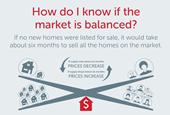
The last time you bought a car or an expensive piece of jewelry, you likely insured it. This is because with a large purchase came an inherent risk — and if your valuable property is stolen or damaged, you don’t want to be left empty-handed.
The same thing is true of lenders who approve your mortgage loan. Every day, mortgage lenders across the country approve tens of millions of dollars in home loans, and they need to be sure they are protecting that risk. That’s where mortgage insurance comes in.
Here are insights you can use to determine if you’ll need to pay mortgage insurance for the life of your loan or a part of your loan term.
What is mortgage insurance?
Lenders often require that borrowers pay mortgage insurance, which protects the lender if the homebuyer becomes unable to pay their monthly mortgage payment.
There are two main types of mortgage insurance. The first is mortgage insurance purchased from the government, which backs Federal Housing Administration (FHA) loans. The second is private mortgage insurance, which is designated for conventional loans that are bought from Fannie Mae and Freddie Mac.
Note: Loans backed by Veterans Affairs (VA loans) do not require any mortgage insurance, but the VA funding fee provides similar coverage against loss.
READ: Major loan types every homebuyer should know
Mortgage insurance for FHA loans
FHA loans are often called “helper loans,” because the lending standards for these loans favor first-time buyers and other homebuyers who may not have a large down payment saved. In fact, FHA loans can be approved with as little as 3.5 percent down at closing.
FHA loans are backed by the government, which then requires that FHA borrowers purchase mortgage insurance. To protect their risk, the FHA requires two things:
- Borrowers must pay an upfront mortgage insurance premium (MIP) at closing; this upfront MIP is 1.75 percent of the total of the loan.
- FHA borrowers must pay MIP throughout the life of the loan. The annual rate for MIP is .85 percent of the loan’s total; this annual rate is divided into monthly payments that the borrower will pay alongside their monthly mortgage payments.
Here’s how that breaks down in terms of dollar amounts. If a borrower were to take out a loan for $185,000, they would pay:
- An upfront mortgage insurance premium payment of $3,237.50 at closing
- An annual PMI payment of $1,572.50, divided into monthly payments of about $131.04
Private mortgage insurance for conventional loans
Conventional loans are not backed by the government, so private lenders may require borrowers to purchase private mortgage insurance (PMI) if they put less than 20 percent down at closing.
Often, conventional buyers will be expected to pay PMI until their loan-to-value (LTV) ratio hits 80 percent or lower.
The LTV ratio is the amount of money you borrowed divided by the value of the property you purchased. In general, a lower LTV ratio means less risk for the lender because as a borrower builds up sufficient equity that will allow them to sell their home, they become less likely to default on their loan.
What else should I know about mortgage insurance?
Mortgage insurance varies by the type of loan you choose — FHA, VA or conventional — but the monthly impact really depends on a number of personal financial factors.
A mortgage loan officer can walk you through all the expenses you should expect at closing and beyond, so you can determine your true buying power as you enter the market. Reach out today to get started on the process of getting a home mortgage loan.








